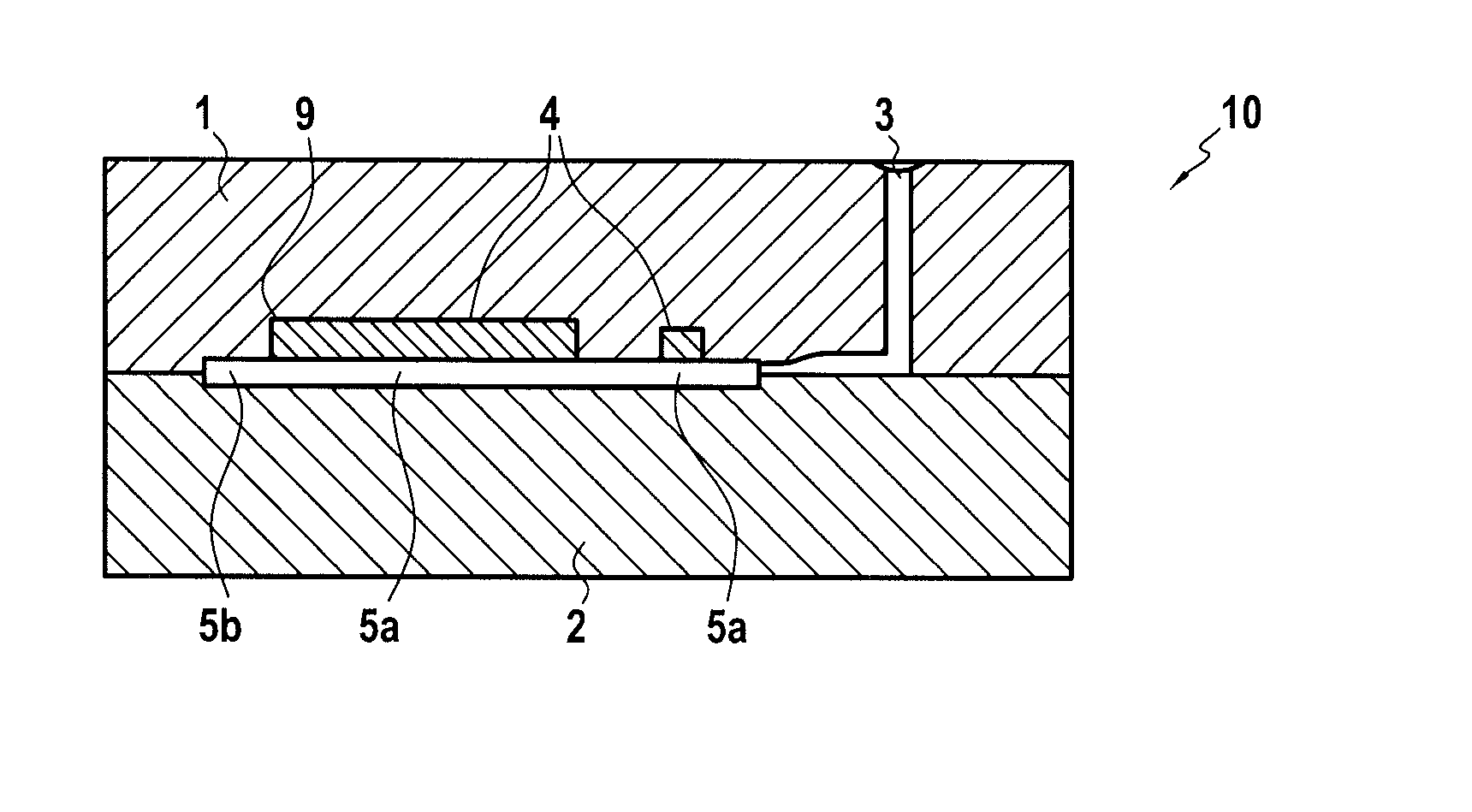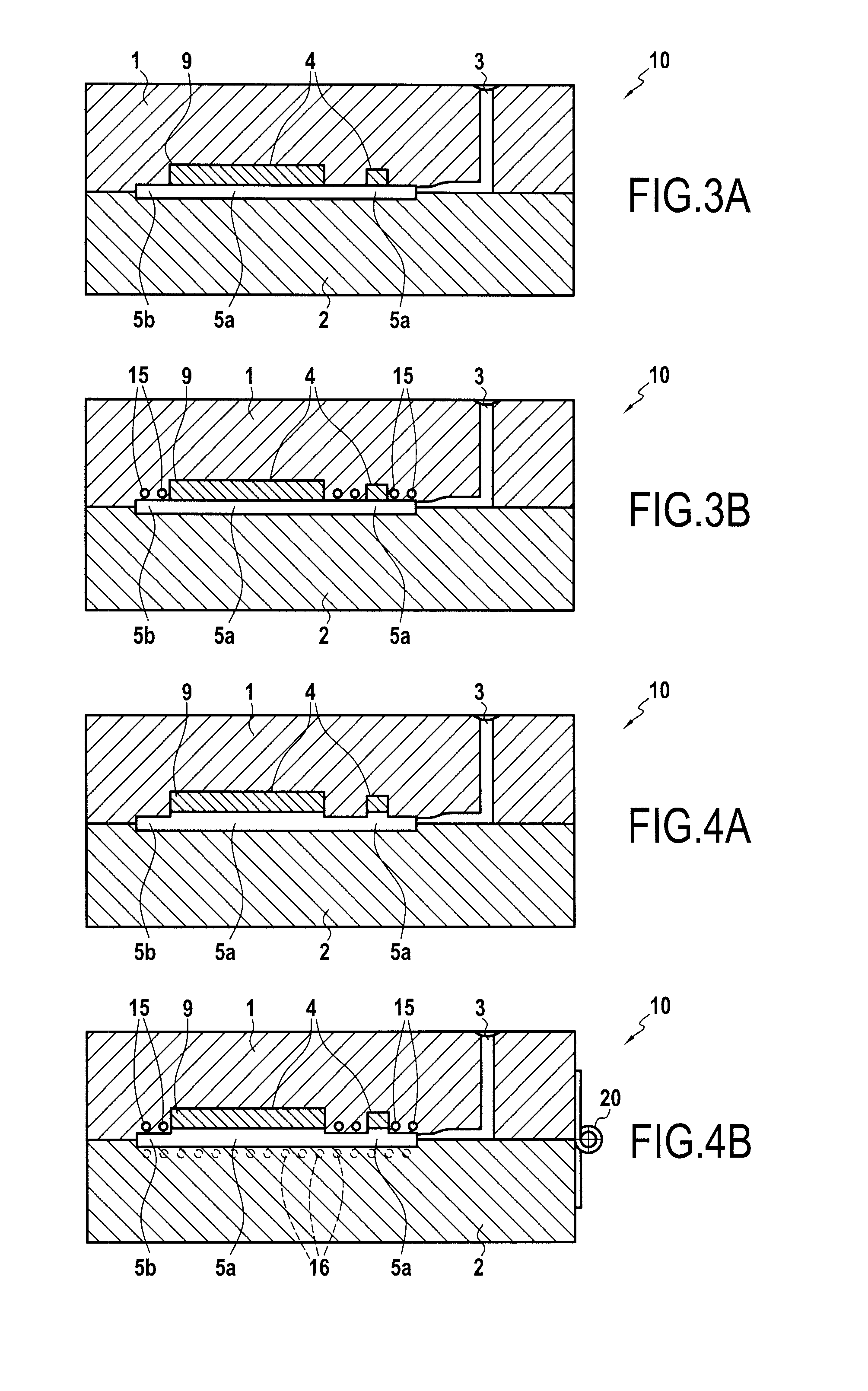Systems and methods for molding
- Summary
- Abstract
- Description
- Claims
- Application Information
AI Technical Summary
Benefits of technology
Problems solved by technology
Method used
Image
Examples
Embodiment Construction
[0047]Reference will now be made in detail to exemplary embodiments of the disclosure, examples of which are illustrated in the accompanying drawings. Wherever possible, the same reference numbers will be used throughout the drawings to refer to the same or like parts.
[0048]FIG. 3 illustrates an exemplary mold according to embodiments of the present disclosure, this mold being configured to form a part substantially similar to that shown at FIG. 2, while avoiding drawbacks of other molding systems such as that shown at FIG. 1. As shown in FIG. 3, such a mold includes at least one injection nozzle 3, a first part 1, and a second part 2, where the first and second parts 1 and 2 are configured to be joined together to form mold cavity 5 between them.
[0049]First and second parts 1 and 2 may be formed from any suitable material capable of withstanding temperatures associated with injection molding. For example, first and second parts 1 and 2 may be formed from aluminum and alloys thereof...
PUM
| Property | Measurement | Unit |
|---|---|---|
| Fraction | aaaaa | aaaaa |
| Temperature | aaaaa | aaaaa |
| Time | aaaaa | aaaaa |
Abstract
Description
Claims
Application Information
 Login to View More
Login to View More - R&D Engineer
- R&D Manager
- IP Professional
- Industry Leading Data Capabilities
- Powerful AI technology
- Patent DNA Extraction
Browse by: Latest US Patents, China's latest patents, Technical Efficacy Thesaurus, Application Domain, Technology Topic, Popular Technical Reports.
© 2024 PatSnap. All rights reserved.Legal|Privacy policy|Modern Slavery Act Transparency Statement|Sitemap|About US| Contact US: help@patsnap.com










